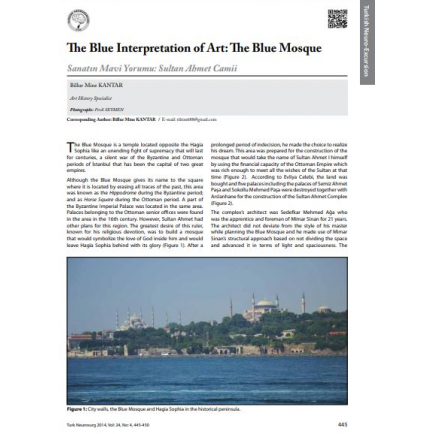
The blue interpretation of art: the Blue Mosque
تاريخ الاضافة
02/07/2022
نوع المحتوى
Article
Category
Magazine
الرابط للمحتوى
Subject Area
Mosques
الكاتب
Billur Mine Kantar
الناشر
Turkish neurosurgery
Year of Publication
2014
الوصف
Although the Blue Mosque gives its name to the square where it is located by erasing all traces of the past, this area was known as the Hippodrome during the Byzantine period; and as Horse Square during the Ottoman period. A part of the Byzantine Imperial Palace was located in the same area. Palaces belonging to the Ottoman senior offices were found in the area in the 16th century. However, Sultan Ahmet had other plans for this region. The greatest desire of this ruler, known for his religious devotion, was to build a mosque that would symbolize the love of God inside him and would leave Hagia Sophia behind with its glory (Figure 1). After a prolonged period of indecision, he made the choice to realize his dream. This area was prepared for the construction of the mosque that would take the name of Sultan Ahmet I himself by using the financial capacity of the Ottoman Empire which was rich enough to meet all the wishes of the Sultan at that time (Figure 2). According to Evliya Celebi, the land was bought and five palaces including the palaces of Semiz Ahmet Pasa and Sokollu Mehmed Pasa were destroyed together with Arslanhane for the construction of the Sultan Ahmet Complex.
Files





